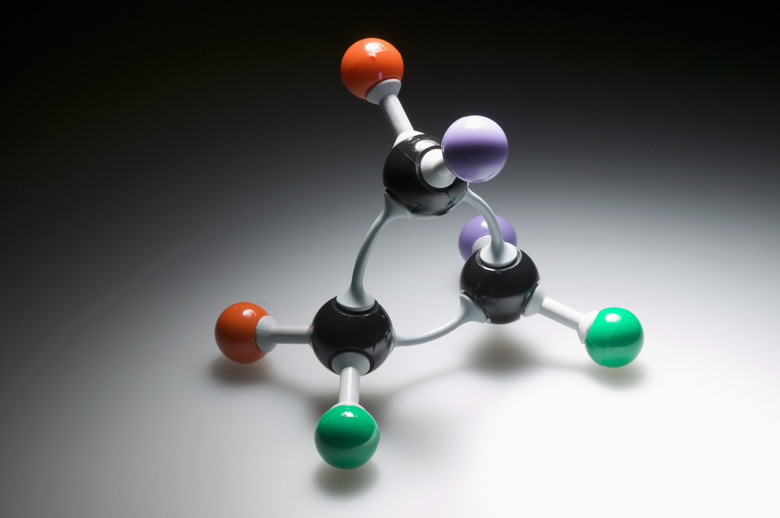Bromine Vs. Chlorine Bond Energy
Bromine and chlorine are halogens — very reactive non-metals. Both bond to a variety of elements. Though chemically similar, their bond energy and resultant bond strength and stability are different. Stronger bonds are shorter bonds. Bond energy is the energy it takes to break the bond.
Data Tabulation
Data Tabulation
For the purpose of useful data tabulation and comparison, bond energy is often given in terms such as kilocalories per mole. A mole is the molecular weight of the substance involved. Alternatively, bond energy is sometimes given as kilojoules per mole.
Example Comparison
Example Comparison
Compare hydrogen bromide (HBr) and hydrogen chloride (HCl) as an example. The molecular weight of hydrogen bromide is,
1.01 grams (H) + 79.90 grams (Br) = 80.91 grams per mole
The energy required to break apart all of the molecules in 80.91 grams of hydrogen bromide is 87.5 kilocalories. Bond length = 141 picometers.
The molecular weight of hydrogen chloride is,
1.01 grams (H) + 35.45 grams (Cl) = 36.46 grams per mole
The energy required to break apart all of the molecules in 36.46 grams of hydrogen chloride is 103 kilocalories. Bond length = 127 picometers.
Chlorine forms shorter, stronger, more stable bonds with hydrogen than bromine does.
Cite This Article
MLA
Summers, Vincent. "Bromine Vs. Chlorine Bond Energy" sciencing.com, https://www.sciencing.com/bromine-vs-chlorine-bond-energy-8163/. 24 April 2017.
APA
Summers, Vincent. (2017, April 24). Bromine Vs. Chlorine Bond Energy. sciencing.com. Retrieved from https://www.sciencing.com/bromine-vs-chlorine-bond-energy-8163/
Chicago
Summers, Vincent. Bromine Vs. Chlorine Bond Energy last modified March 24, 2022. https://www.sciencing.com/bromine-vs-chlorine-bond-energy-8163/
